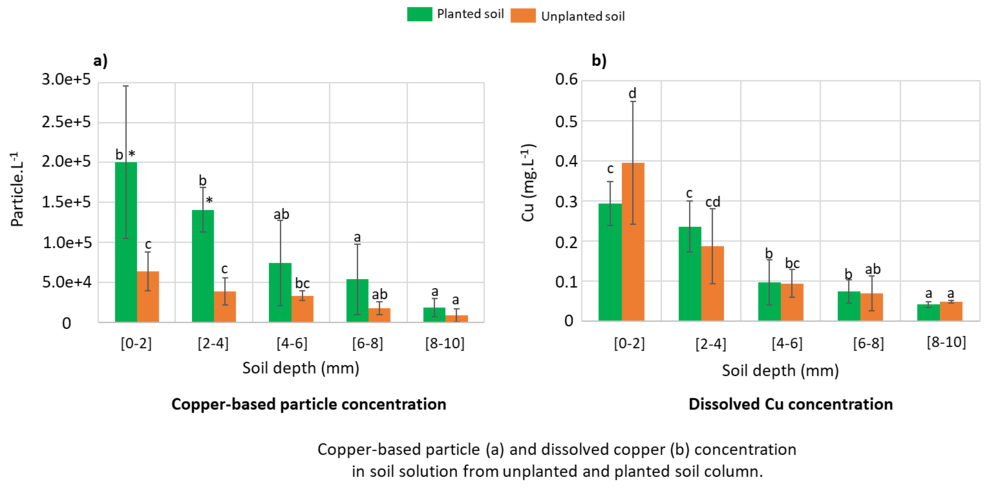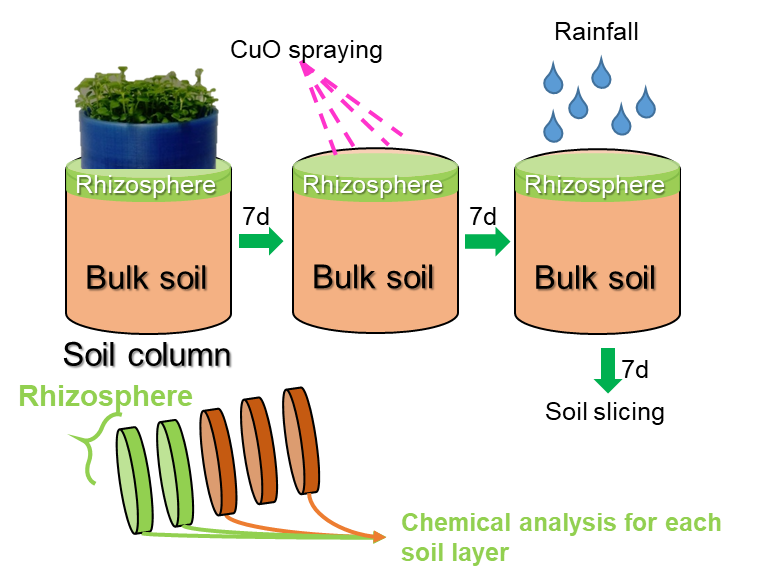NanoFASE Case Study: Transport of nanopesticides in soil
Nanopesticides are used for their enhanced properties as compared to conventional pesticides (stable suspensions, more precise target area, improved uptake by plants…).
Nanopesticides are used and applied similarly to conventional pesticides; however, due to their differing physicochemical properties (dissolution rate, bioavailability, etc.), it is likely that their transport and fate within the environment will be different. For this reason, it is important to determine how different environmental factors such as the interaction between plant and soil can have an impact on soil properties and modify the fate of nanopesticides. In this case study, we look more specifically at the fate of copper oxide nanoparticles (CuO NPs) which are used as fungicides and bactericides.
Study aim |
Evaluate the impact of the rhizosphere on the transport of copper-based nanopesticides (CuO) during a rainy episode in a cultivated soil.
Experimental approach |
Overview |
|
Comparison of CuO NPs concentration in soil solution between cultivated and bulk soil. Comparison of copper concentration in each soil layer (retention profile). |
Compartment involved: Rhizosphere NP type/size: CuO-NP 35mm Species: Turnip Assay: Soil column |
Results |
|
The turnip cultivation reduced CuO NP dissolution leading to a higher particle number concentration in this layer (See Figure). Plants can have an effect on nanopesticide speciation, but in this particular case, this effect did not lead to significant differences in extractable dissolved Cu. A more in-depth investigation of the Cu speciation in these samples is planned.

Modelling parameter outputs |
Emitted to |
|
|
Read more |
Read also |
|
Kah M, Kookana RS, Gogos A, Bucheli TD (2018) A critical evaluation of nanopesticides and nanofertilizers against their conventional analogues. Nature Nanotechnology 13, 677-648 (2018). https://www.nature.com/articles/s41565-018-0131-1
|
Van Gestel C, Hund-Rinke K, Kuhlbusch T, Van den Brink NW and Nickel C. (2014) Fate and Bioavailability of Engineered Nanoparticles in Soils: A Review. Critical Reviews in Environmental Science and Technology 44, 2720-2764. Walker GW et al. (2018) Ecological Risk Assessment of Nano-enabled Pesticides: A Perspective on Problem Formulation. Journal of Agricultural and Food Chemistry 2018 66 (26), 6480-6486. DOI: 10.1021/acs.jafc.7b02373
|
Contact
 Clément Layet
Clément Layet

 Ag
Ag